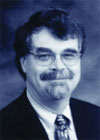Not long ago, psychiatrists were taught that adults had certain psychiatric diseases and diagnoses, and children had others. Some overlap was recognized, but it was thought to be minor. Mania, for example, was thought to be an adult disorder, and attention-deficit/hyper-activity disorder (ADHD) was for kids. When an adult presented with ADHD symptoms, we approached the diagnosis with caution. We wondered, “Is the patient just trying to get amphetamines?” When children were diagnosed with mania, we were skeptical. Could they just be overly spirited?
The misconceived separation of adult and child diagnoses developed in part because the people writing the diagnostic criteria were not the ones treating the most severely ill children. When I was in residency during the 1970s, we were discouraged from using the DSM to diagnose children. Instead, we used a set of pediatric diagnoses developed by the Group for Advancement of Psychiatry that did not translate readily into those used for adults.
In this issue, Michael Schwartz, MD, makes it clear that—yes—ADHD is a problem for many adults, but its treatment requires a different approach from that used in children. Likewise, Peter Buckley, MD, and colleagues confirm that psychotic disorders do occur in younger patients and explain how treating children and adolescents differs from treating adults. Looking to the future, Joseph DeVeaugh-Geiss, MD, previews new indications and compounds being developed specifically for psychiatric disorders in younger patients. His compilation of 21 medications in the pipeline tells me that child and adolescent psychopharmacology is poised for rapid growth.
As more effective medications and more reliable and valid diagnoses are developed for children, medication treatment should gain greater acceptance in child psychiatry. Many parents and some psychiatrists still resist the use of psychotropics in children, but that resistance is at odds with the latest findings.
Originally, our publisher did not plan to send Current Psychiatry to child and adolescent psychiatrists, as they are not surveyed by the service that rates medical journal readership (our “Nielsen ratings”). I suppose this means that the pharmaceutical industry, which buys journal advertising partly based on readership scores, does not believe that child psychiatrists prescribe many medications. Anyway, we are sending Current Psychiatry to pediatric psychiatrists, and I expect the rating system eventually will count them as “readers.” We certainly do.
I also recommend the discussion by Robert Forman, PhD, on how to guide patients to the 12-step programs that best meet their individual needs. Mutual hostility once characterized psychiatry’s relationship with 12-step programs. Today, most 12-step program leaders accept that medications have a place in managing mental and physical problems, and psychiatrists think of 12-step programs as another valuable treatment option.
Psychiatry keeps evolving, which allows us to help more people. That’s why I’m proud to be a psychiatrist. Current Psychiatry allows us to share all the changes in our profession, and that’s why I’m proud of this journal.
And, as always, we want to hear what you think. Write to Current Psychiatry at hillarjr@email.uc.edu.


